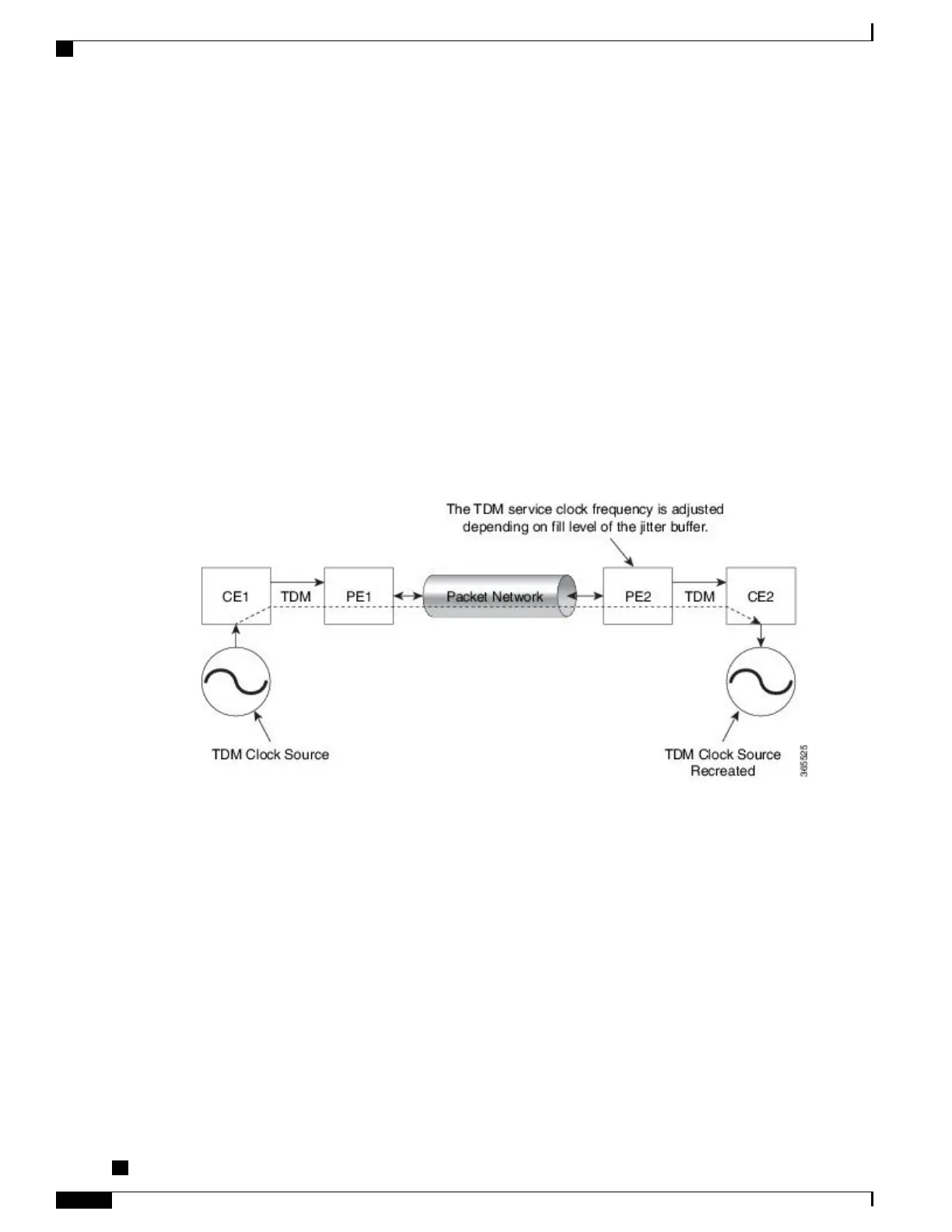Finding Feature Information
Your software release may not support all the features documented in this module. For the latest caveats and
feature information, see Bug Search Tool and the release notes for your platform and software release. To
find information about the features documented in this module, and to see a list of the releases in which each
feature is supported, see the feature information table.
Use Cisco Feature Navigator to find information about platform support and Cisco software image support.
To access Cisco Feature Navigator, go to www.cisco.com/go/cfn. An account on Cisco.com is not required.
Adaptive Clock Recovery (ACR)
Adaptive Clock Recovery (ACR) is an averaging process that negates the effect of random packet delay
variation and captures the average rate of transmission of the original bit stream. ACR recovers the original
clock for a synchronous data stream from the actual payload of the data stream. In other words, a synchronous
clock is derived from an asynchronous packet stream. ACR is a technique where the clock from the TDM
domain is mapped through the packet domain, but is most commonly used for Circuit Emulation (CEM).
Benefits of ACR for 8 T1/E1 Interface Module
•
Customer-edge devices (CEs) can have different clocks from that of the Provide-edge devices (PEs).
Every T1/E1 interface module supports eight pseudowires (or the derived clocks).
Restrictions for ACR on 8 T1/E1 Interface Module
•
ACR is supported only on the 8-port T1/E1 interface module (A900-IMA8D). It is not supported on the
16-port T1/E1 interface module (A900-IMA16D), the 32-port T1/E1 interface module (A900-IMA32D),
or the 4-port OC3 interface module (A900-IMA4OS).
•
ACR is supported only for unframed CEM (SAToP) and for fully-framed CEM (CESoPSN). Fully-framed
refers to all the timeslots of T1 (1-24 ) or E1 (1-31) interfaces.
1-Port OC-192 or 8-Port Low Rate CEM Interface Module Configuration Guide, Cisco IOS XE Everest 16.7.x
(Cisco ASR 900 Series)
134
Clock Recovery System for SAToP
Finding Feature Information

